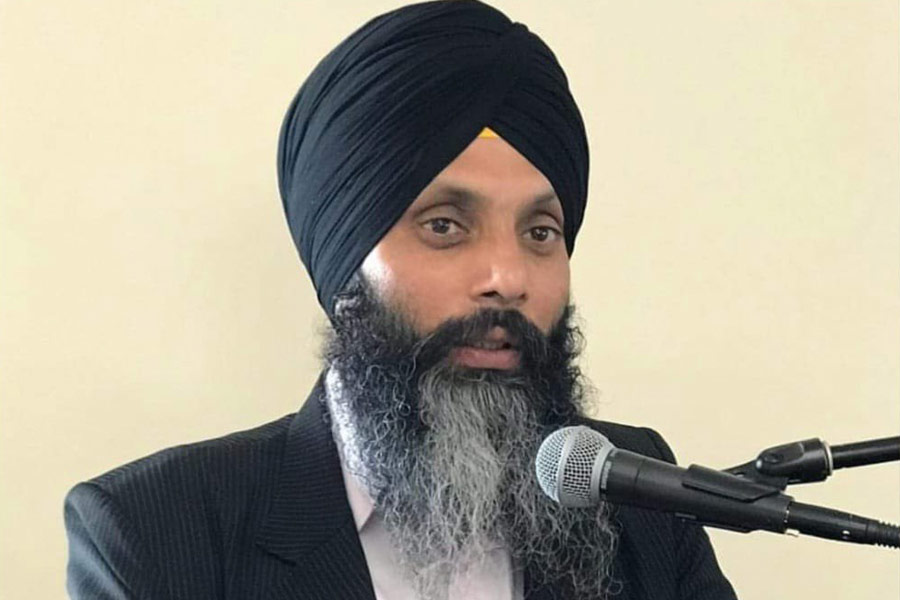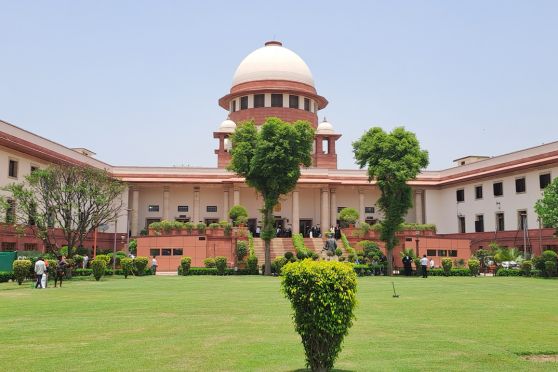At an election rally in Rajasthan, the prime minister told a gathering that the Congress would take away citizens’ wealth (including the sacred mangalsutra) and hand it over to Muslims. The Muslims were identified in the speech as “those who have more children” and as “infiltrators”. The comments generated a considerable degree of consternation, and not just among members of the Muslim minority. By any reasonable yardstick, they were one of the most inflammatory set of comments ever made by an Indian prime minister. Yet, in many respects, the comments only bestowed an official stamp of approval to an informal regime policy of scapegoating Muslims.
Much of this scapegoating takes place on news networks allied to the government. The news anchor, in many ways, has now taken over from the RSS pracharak the task of scapegoating Muslims. A recent Newsminute-Newslaundry survey of news debates on Hindi and English channels found that over the last three months (February-April), almost a quarter of debates delved on ‘Hindu-Muslim’ issues. The purpose of these ‘debates’ is to present before the audience novel ways in which Muslims are menacing the stable functioning of (the Hindu) society’s safety, cultural life, and moral values. Themes like hijab and namaz, mosques and Muslim emperors, love jihad and corona jihad, have become commonplace.
The prime minister’s comments are nevertheless illustrative. We must keep in mind that they come at a time when the leading Opposition party, the Congress, is fighting the election on a platform of reconfiguration of socio-economic power in favour of the marginalised. This includes promises of substantial welfare payments paid out to women and a commitment to increase the reservation cap of the SC/ST/OBC communities. This was the context in which the prime minister made the remarks. The comments, therefore, offer us a rare window into the function of the Muslim scapegoat in contemporary Indian society. In order to understand this point, let’s go through a brief overview of the concept of scapegoat in anthropological literature.
Scapegoating is a fairly ancient and universal mechanism in human affairs. Hence, the term, scapegoat, has become something of a cliché. Thus, the specific ways in which the scapegoat is instrumentalised to meet certain needs of social or political integration are often obscured. Indeed, this obscurity is a feature of the design of the scapegoat mechanism that is often used to provide a mask to political practice, or to confer legitimacy on some aspects of control and domination that have come under threat. This was the central thesis of the theory of scapegoating of the French anthropologist, René Girard, presented in condensed form in the book, The Scapegoat. Girard sought to uncover recurring patterns underlying the scapegoat mechanism with a sustained comparison between medieval accounts of persecution and mythical texts. For instance, he deconstructs a text which relates to the persecution of Jews in medieval Europe who were accused of causing the plague by poisoning wells. Girard insists that while such charges might seem absurd to us in hindsight, they must not be dismissed as the products of mere ignorance or irrationality. Indeed, a few years ago, we saw highly-educated people, at the helm of media and State affairs, run a sustained campaign to blame Muslims for the coronavirus in this country. Understanding these patterns of scapegoating, therefore, warrants explorations sensitive to wider processes of societal change. Girard argues that scapegoating typically arises when there is a threat to the “social order”, particularly the “hierarchical differences” underlying the social order. “No culture exists within which everyone does not feel ‘different’ from others and does not consider such ‘differences’ legitimate and necessary,” wrote Girard. The sociologist, Pierre Bourdieu, characterised quotidian social domination as forming an accepted common sense: “what goes without saying” because it “comes without saying”. One might hear echoes of this in the recent tumult over inheritance tax on the wealthy, a faintly progressive proposal that was plucked up by the elite media here as heralding some sort of a socialist spectre.
But there are occasions when the legitimacy of differential social entitlements and privileges comes under question. Historically, such situations were preceded by plagues or comparable disasters when social bonds were loosened or even destroyed. This is when the scapegoat is chosen as a ‘victim’ whose ‘persecution’ allows for the reconstitution of the hierarchical social order. “The signs that indicate a victim’s selection result not from the difference within the system but from the difference outside the system,” Girard wrote. These often tend to be ethnic or religious minorities, marked out for bearing cultural markers which may have little relation to the hierarchies that have come under question. “In India the Moslems are persecuted, in Pakistan the Hindus.” The victims are thus blamed for all that ails the larger community: disintegration of society and threat to the moral order. And, hence, the persecution of the scapegoat helps to reinstitute the legitimacy of the extant social order through acts of collective exorcism.
We see a similar process taking place in Sri Lanka. The victims there are Tamil Hindus and the persecutors Sinhala Buddhists. Let us quote from last month’s report from the Human Rights Watch: “Eight Tamil Hindu worshippers arrested by Sri Lankan police while engaging in festival rituals last week were detained for more than 10 days and allegedly abused… In recent years, Sri Lankan government authorities and nationalist Sinhala Buddhist monks have been targeting Hindu as well as Muslim religious sites in the country’s north and east in violation of the right to freedom of religion and belief, among other basic rights. The eight were arrested at the Veddukkunaari temple near Vavuniya, a Hindu shrine that Buddhist monks, backed by the government’s Department of Archaeology, say is an ancient Buddhist site. It is one of numerous temple sites in northeastern Sri Lanka claimed by nationalist Buddhist monks, frequently with the support of government agencies and the security forces.”
The scapegoating of Sri Lankan Tamils has broadly followed similar patterns as in India, even if the axis of persecution took place more on ethnic/linguistic rather than religious lines. As the Sri Lankan anthropologist, Stanley Tambiah, wrote in Sri Lanka: Ethnic Fratricide and the Dismantling of Democracy, the British passed power in 1948 to a “loosely associated elements of the ‘traditional’ English-educated elite” that chiefly comprised the United National Party of D.S Senanayake. The critics quipped that “it was neither united, nor national, nor a party.”
In a fairly short order, Tambiah wrote, “tensions and contradictions” arose between two factions of Sinhala Buddhists. These were the “old English-educated liberal and secular” coastal bourgeoisie and the “newly arisen elite of largely Sinhala-educated rural leaders and purveyors of small commerce, committed to a Sinhala-Buddhist identity”. The persecution of Tamils, which started in the late 1950s and ended with the genocidal assault of 2009, is a story of complex political dynamics, but one which is deeply interwoven with the need to construct a united Sinhala Buddhist identity in the face of recurring challenges to an elite-based political order. In spite of the destruction of Tamil political-military power, the persecution has not stopped. Indeed, the deepening inequalities and the collapsing State institutions, seen in the popular assault on the presidential palace last year, suggest that the Tamil scapegoat will remain a useful mechanism to maintain elite legitimacy and inoculate the socio-political order.
Remarkably, there is little public discussion of this persecution in the country. This is probably because of two reasons. One, it presents us with a rather disquieting mirror in terms of the resemblance between the majoritarian extremists on both sides. In Gujarat, the ascendance of Hindutva in the 1990s followed the heightened caste-based political competition in the 1980s, which culminated in a series of caste-based riots on the issue of reservations. The hegemony of the Gujarati mercantile socio-economic order was then reconstituted through Hindutva and the accompanying centralising of the Muslim scapegoat. This process heightened under the then chief minister, Narendra Modi, whose first term coincided with the anti-Muslim pogrom in 2002. Two, the plight of the Sri Lankan Hindus is an embarrassing fact for a government which has billed itself as the protector of ‘Hindus of the neighbourhood’. The fact that Sri Lankan Tamils have been left out of the remit of the Citizenship (Amendment) Act is in itself a revealing insight into how the measure is more about the construction of an ‘Islamic threat’ in the popular imagination rather than its stated goal of protecting refugees.
The medieval Europeans who regularly persecuted and massacred the Jewish scapegoat over moral panic could perhaps hide under the veil of ignorance. Modern human beings, whether in India or Sri Lanka, do not quite have that excuse.
Asim Ali is a political researcher and columnist










